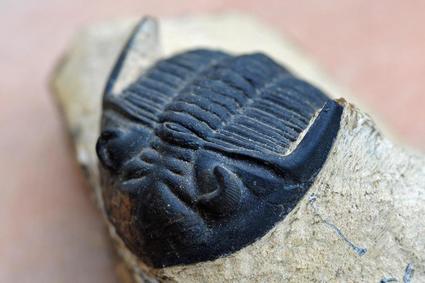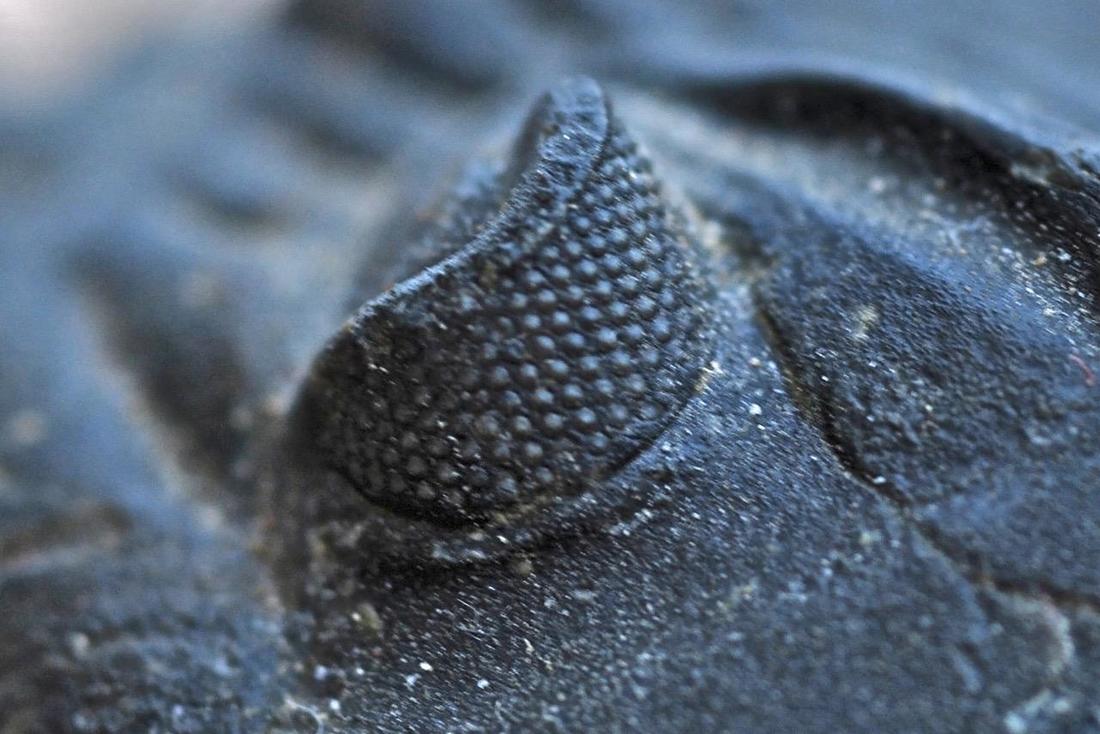 Trilobite (photo by David W. Cloud) Trilobite (photo by David W. Cloud) “The trilobite is an extinct arthropod, a hard-shelled, segmented sea creature. The name ‘trilobite’ means ‘three lobed’ and refers to the creature’s three longitudinal lobes. It existed in a bewildering number of varieties, with fifteen to twenty thousand known species, ranging in size from one millimeter to over two feet in length. Evolutionists place the trilobite in the earliest stages of life, in the so-called Cambrian layer. The earliest trilobites supposedly lived 570 million years ago and the creature is thought to have gone extinct 240 million years ago. It is considered one of the signature creatures of the Paleozoic Era. Evolutionary writings are filled with accounts of the trilobite, of how it ‘evolved,’ ‘modified,’ ‘developed eyes,’ and such, but there is no evidence for this. The scientific evidence that it evolved from some other creature or that its complex eyes and other organs evolved is non-existent. This proposition is based upon evolutionary assumptions and wishful thinking and not on the actual evidence. Consider the trilobite’s compound eye, which gives every evidence of being a marvelous design. Clarkson and Levi-Setti (1975) of the University of Chicago did spectacular work on the optics of the trilobite eye lenses. “It turns out that each lens is a doublet, that is, made up of two lenses, while the shape of the boundary between the two lenses is unlike any now in use--either by animals or humans (Shawver 1974). However, the lens shape and the interface curvature are nearly identical to designs published independently by Descartes and Huygens in the seventeenth century. Their design had the purpose of avoiding spherical aberration and was known as the aplanatic lens. Levi-Setti pointed out that the second lens in the doublet of the trilobite eye was necessary in order that the lens system could work under water where the trilobites lived. Thus, these creatures living at the earliest stages of life used an optimal lens design that would require very sophisticated optical engineering procedures to develop today’ (Ian Taylor, In the Minds of Men, p. 164). Some of the trilobites had 15,000 lenses per eye, and all of these worked together in perfect harmony to provide exceptional vision for this ‘simple’ creature. In spite of evolutionary claims that ‘trilobites developed one of the first sophisticated visual systems in the animal kingdom,’ there is no evidence that the trilobite eye or any other eye evolved. The eye is found intact on countless fossilized creatures reaching back to the supposed earliest stages of the fossil record, and the eye appears fully formed in countless varieties, with absolutely no evidence that one type of eye evolved from another. To lay out a display of eyes from ‘simple’ to more complex is not evidence for evolution. That could just as well prove that each particular eye was designed by God for that particular creature.” Seeing the Non-existent: Evolution’s Myths and Hoaxes, David Cloud, copyright 2011
www.wayoflife.org, [email protected], Comments are closed.
|
Archives
February 2020
|
Ads do not imply endorsement | Policy/Terms of Service | About Us | Contact Us | © Life Work Academy, Inc.

 RSS Feed
RSS Feed

